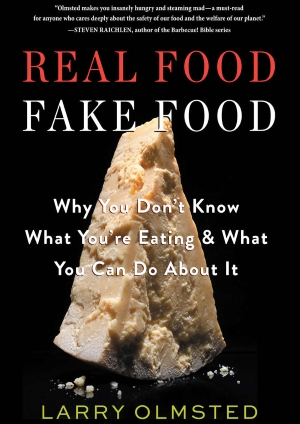There’s a great deal of buzz on the internet about sodium benzoate dangers. The question is how much of what you read is fact and how much is fiction. The purpose of this post is to give you the facts.
What is sodium benzoate?
Sodium benzoate is a salt derived from benzoic acid and is used as a preservative in foods and cosmetics. Though benzoic acid is a more effective preservative, it isn’t very soluble in cold water compared to sodium benzoate which dissolves easily in water.
How is sodium benzoate made?
When you combine an acid and a base, the result is a salt. When you mix sodium hydroxide with hydrochloric acid, you get sodium chloride, table salt. When you mix sodium hydroxide with benzoic acid you get sodium benzoate.
Do foods naturally contain sodium benzoate
Sodium benzoate is not found in foods unless it is added as a preservative. However, quite a number of foods contain benzoic acid. High concentrations of benzoic acid are found in some berries. Apples, plums, cinnamon, cloves and other foods including milk contain benzoic acid. It is found in many plants, animals, and milk. You will find a number of sites on the internet stating that sodium benzoate is found in foods. That information probably came from Concise International Chemical Assessment Document 26 (2005). I encourage you to read it for yourself. I’ve included it in its entirety here [1], because it includes a great deal of related information. The document states that benzoic acid is naturally contained in many foods. The confusion comes because the document often uses benzoic acid and sodium benzoate synonymously e.g. benzoic acid/sodium benzoate. However, it clearly states that it is benzoic acid that is found naturally in foods, but sodium benzoate a food additive.
How does the body process sodium benzoate?
Sodium benzoate is transported to the liver where it is filtered out and expelled in urine.
Sodium benzoate dangers
Sodium benzoate is added to many foods with a pH 4.5 or lower such as pickles, catsup, and soft drinks. It is also added to mouthwashes, toothpaste, creams, lotions and other cosmetic products where a small percentage may be absorbed through the skin.
Though regulations only allow a small percentage of sodium benzoate to be added to products (.1% by weight). The concentration may vary depending on what country you live in. However, the effects of repeated doses of sodium benzoate over time are unknown. Another consideration is how much sodium benzoate an individual actually consumes during a day. In the U.S. it appears most of our sodium benzoate is consumed in soft drinks whereas, in China and Japan, the consumption is primarily from Soya sauce. There have been tests done on rats and mice using varying concentrations of sodium benzoate to their diets, the toxicity and carcinogenicity appear to be low. Short-term tests using higher doses were also performed on human volunteers with similar results.
Professor Peter Piper a molecular biology expert at Sheffield University found that sodium benzoate damaged the mitochondrial DNA of yeast cells. (Mitochondria are free floating elements in each cell with multiple functions. They are associated with cell metabolism and aging). He concluded that it may do the same to human DNA. (With a name like that, I bet he got teased a lot as a kid.) I have not read his data so don’t know what concentrations of sodium benzoate he was using that caused damage to yeast cell mitochondrial DNA. It is known that high concentrations of sodium benzoate are toxic.
Another study that I consider questionable has associated sodium benzoate with ADD. The problem with this study was that sodium was used in conjunction with food dyes. It is unknown whether it was the sodium benzoate, the dyes or the combination that caused the hyperactivity of the children studied. Other studies have concluded that food dyes by themselves are associated with ADD.
One known cancer danger exists related to sodium benzoate. If you combine ascorbic acid (vitamin C) with sodium benzoate and potassium benzoate (another preservative), you get benzene. Benzene is a known carcinogen. Most of the benzene exposure comes from the environment including cigarette smoke, car exhaust, industrial waste and service stations. Some benzene exposure can also come from contaminated food and water. Some soft drinks have been removed from the market when they were found to contain benzene. A minimal amount of benzene exposure comes from food (Whew, that’s good news.)
Conclusion
The real sodium benzoate dangers come from the unknown. What are the long term effects? That’s a giant question that no one can presently answer. How much is mitochondrial DNA damage caused by sodium benzoate? That is another unknown.
Does sodium benzoate have an effect on brain function as the ADD studies suggest? This is another unknown. With these things in mind, here is my recommendation to our goddesses who we love.
- It’s a good idea to leave soda pop alone. There are many wonderful beverages to enjoy that do not contain sodium benzoate.
- Don’t stress about foods that contain sodium benzoate unless you are eating them in large quantities.
- For our goddesses who cook with or use a lot of soy sauce, buy the sodium benzoate free variety.
- Avoid cosmetics, creams, and lotions that contain sodium benzoate if you leave them on your skin.
- If you create products use other preservatives or no preservatives at all for small batches if for personal use.
As new information and studies on the use and effects of this preservative are released, you will be the first to know.
Now go have fun and relax.
Update: May 2017
Study on the potential effects of sodium benzoate on blood sugar levels
https://www.ncbi.nlm.nih.gov/pmc/articles/PMC4289147/ [2]
Sodium benzoate is metabolized in the liver to produce Hippurate which is then expelled by the kidneys. In a study done to determine if sodium benzoate at generally regarded as safe (GRAS) levels had a negative effect on blood sugar levels.
It was determined that for the short term, there was no negative effect. However, after consuming sodium benzoate, in addition to the expected rise is Hippurate and sodium benzoate, blood levels of anthranilic acid, a tryptophan metabolite, had a “robust rise” while acetyl glycine dropped.
Keep in mind this study was very small (only 14 overweight individuals) and involved a one-time increase in sodium benzoate. What the long-term effects with consistent introduction of sodium benzoate to the human body remain unknown.
An investigation by researchers into the safety of sodium benzoate
http://biotech-health.com/?page=article&article_id=35084 [3]
After careful investigation of all data available to them, the researchers are quoted here:
“Conclusions: Studies on natural ingredients in foods to find compounds with similar effects as benzoate with less adverse effects is necessary.”
New study may give us answers
https://trialsjournal.biomedcentral.com/articles/10.1186/s13063-017-1908-5 [4]
A new Australia/New Zealand study completely unrelated to the dangers of sodium benzoate will nevertheless give us important clues as to its potential toxicity, at least for the short term.
The study is to determine whether administering sodium benzoate over a 12-week period will help folks with various psychiatric disorders such as depression and/or anxiety.
If the study proves successful, it will be interesting to follow the effects of high doses of sodium benzoate over time.
The study subjects will be given dosages of 1 gram per day. The theory that sodium benzoate is safe is based on data examined by these researchers. The study will include 180 participants, but only half of them will receive the sodium benzoate, the balance will receive a placebo (fake pill).
If this information sounds confusing and conflicted, you’re not alone in feeling this way. We will have to wait and stay on top of the science to know what the real effects of this controversial preservative. I’m on it so you can be kept up to date.
Recommended Reading:
Real Food/Fake Food: Why You Don’t Know What You’re Eating and What You Can Do About It [5]Pandora’s Lunchbox: How Processed Food Took Over the American Meal
[5]Pandora’s Lunchbox: How Processed Food Took Over the American Meal [6]
[6]

